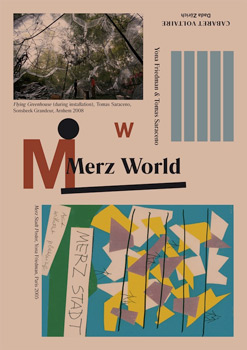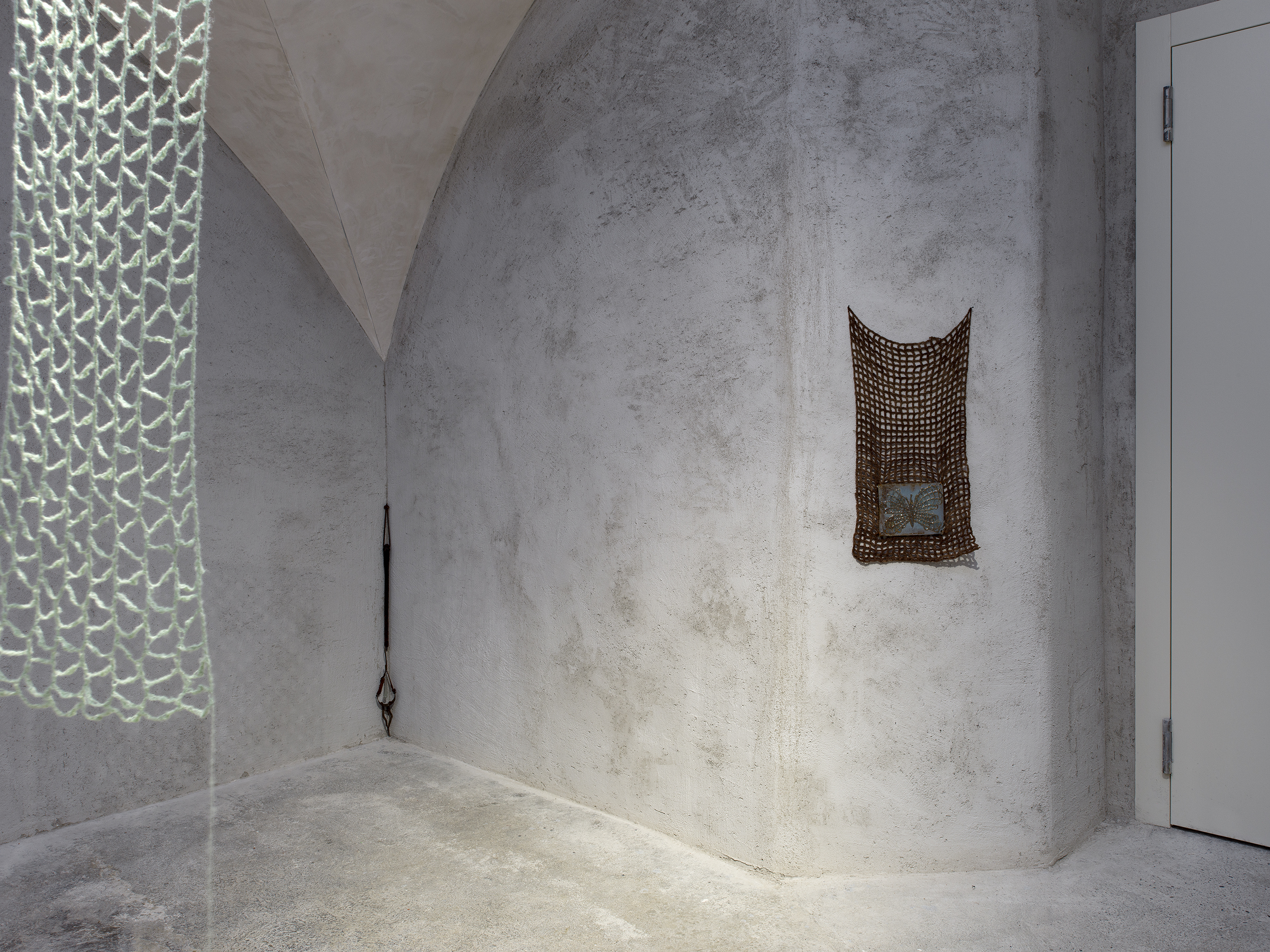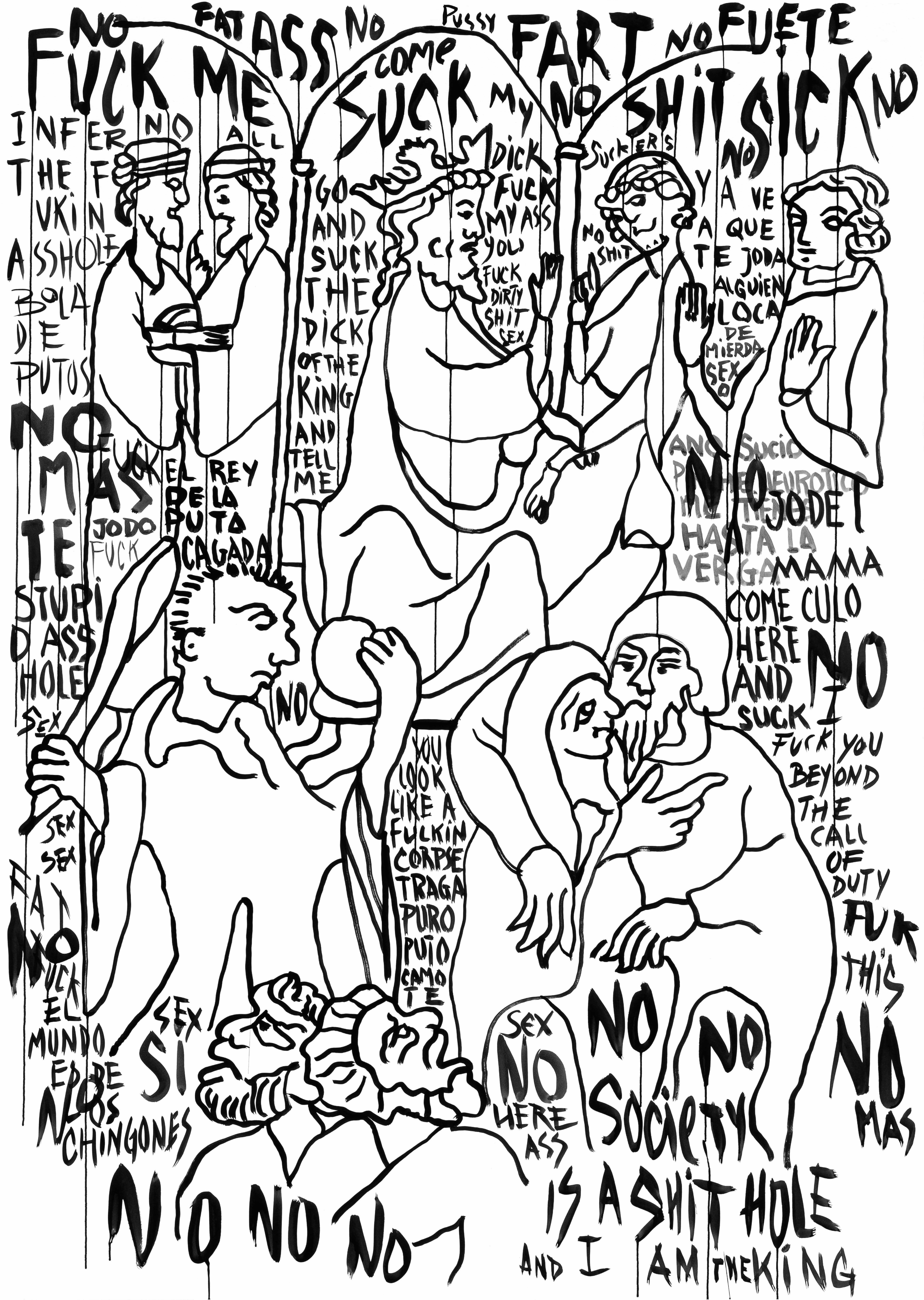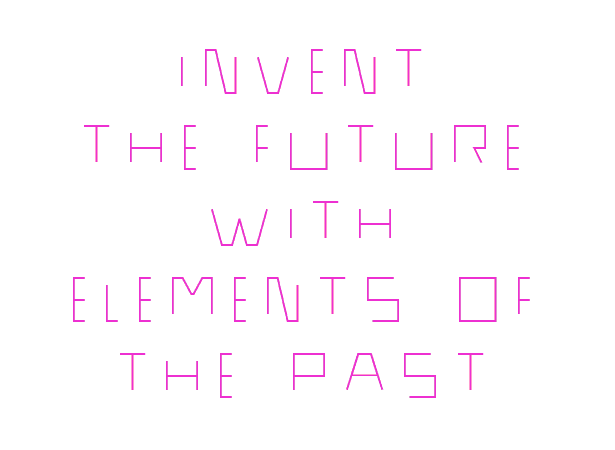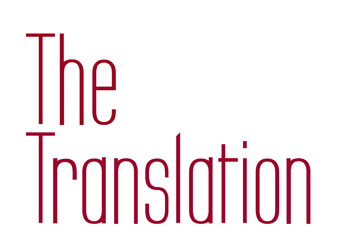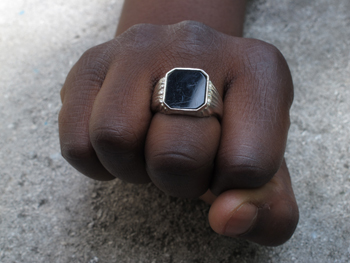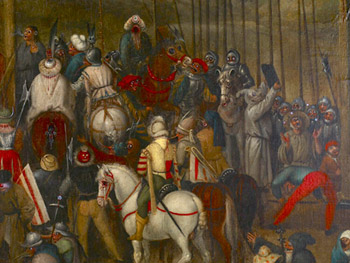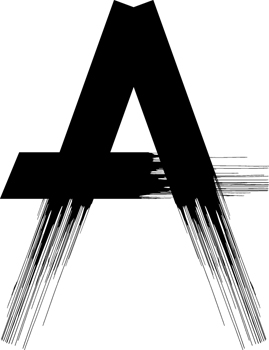Yona Friedman & Tomas Saraceno
Merz World
14 April–21 August 2011
Opening:
14 April 2011, 18:00–20:00
Opening:
19 June 2011, 18:00–20:00
Spiegelgasse 1
8001 Zurich
+41 43 268 57 20
info@cabaretvoltaire.ch
www.cabaretvoltaire.ch
www.merzbau.ch
It all began with a conversation between Yona Friedman and Tomas Saraceno in Friedman’s Paris flat in December 2009 in the course of which the two artists decided to collaborate on a project for the Cabaret Voltaire.*
For the exhibition at the birthplace of Dada, the two artists concentrate on the idea of Merz World, based on Kurt Schwitters’ Merzbau in Hanover, using it as a common ground for their project to bring together Ville Spatiale and Cloud Cities.
Yona Friedman: Ville Spatiale is a “Merzstruktur”
Yona Friedman will design a structure occupying three spaces of the Cabaret Voltaire, realized by students of the School of Design in St. Gallen, Faculty of Fine Arts, in accordance with his theory that the architect provides ideas to be realized by others.
For Friedman, the most interesting feature about Merzbau is what he calls the “Merz Principle”, that is, the principle according to which a seemingly random agglomeration of things comes to form a whole. In his opinion the challenge of producing architecture in urban spaces lies in basing it on the behaviour of its users. “A building that doesn’t have any users is no building at all. It is a ruin,” he says. In Ville Spatiale Friedman suggests a more or less regular rigid supporting grid called the “infrastructure” into which individual, differently shaped homes are inserted, forming an irregular pattern. Thus, the Ville Spatiale is a “Merzstruktur” on an urban scale for a mass society consisting of individuals.
Tomas Saraceno: Cloud City as updated Dada Research
After one month, on 19 June 2011, Tomas Saraceno will alter Friedman’s structure by introducing an intervention based on his own concept, Cloud Cities.
Tomas Saraceno’s idea of Cloud Cities is even more dynamic than Friedman’s concept. Cloud Cities tries to copy the behaviour of clouds as models for houses, buildings, cities and even continents. He uses the sky and the climate, as an equivalent of Friedman’s “infrastructure”. One main concern of Cloud Cities lies in the question as to how to connect the Cloud Cities and the Cloud Buildings. In Cloud Cities the inhabitants play an important role: they cannot only change the shape of their houses but also their position and context, and therefore their function. Saraceno is researching alternative ideas and possibilites of social living. In Cloud Cities, we can see the realisation of a dynamic system with feedback loops inspired by the Merzbau. The Merzbau can be interpreted as a spatial device to be transferred to our contemporary environment, rendering reality more complex and opening up possibilities for the future. Saraceno’s artistic method is thus a way of updating Dada research in Schwittters’ spirit so as to change our present lives, giving us the opportunity to look at things in a completely new way.
More Contributions on Dada and Merz
The Merz World structure will comprise contributions on Dada and Merz by Thomas Bayrle, Beni Bischof, Olaf Breuning, Com&Com, Medusa Cramer, Nico Dockx, Marcel Duchamp, Leif Elggren, Etoy, Didier Faustino, Claudia Fernandez, Vadim Fishkin, HR Fricker, Gilgi Guggenheim, Andy Guhl, Colin Guillemet, Alex Hanimann, Carl Michael von Hausswolff, Lori Hersberger, Nic Hess, Daniel Robert Hunziker, Ali Kazma, San Keller, Nicolas Kerksieck, Zenita Komad, Hilary Koob-Sassen, Kyungho Lee, Armin Linke, Kazimir Malewitsch, Map Office, Anca Munteanu Rimnic, Ciprian Muresan, Nils Nova, Dan Perjovschi, David Renggli, Ana Roldàn, Felix Schramm, Melanie Smith, Nedko Solakov, Giuseppe Stampone, Erik Steinbrecher, Una Szeemann & Bohdan Stehlik, Antonio Vega Macotela and more.
It is our aim to create an installation that implodes in terms of structure and information, or in Friedman’s own words, we try to create “not a complex group exhibition but a complicated one”, and thus make possible an exchange of ideas, visions and concrete architectural structures between two challenging artists of different generations.
For more information please go to: www.merzbau.ch
* This conversation was published under the title The Spacial Cloud City in Domus Magazine no. 936, May 2010
Image above:
Flying Greenhouse (during installation), Tomas Saraceno, Sonsbeek Grandeur, Arnhem 2008.
Merz Stadt Poster, Yona Friedman, Paris 2005.
Design by Grek Molesto, 2011.

